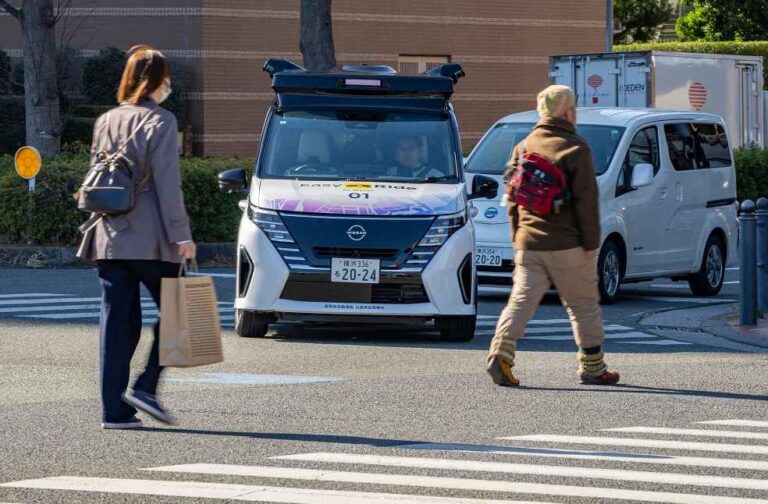Nissan has begun testing its autonomous Serena minivan on busy city streets, aiming to catch up with industry leaders like Waymo. Equipped with 14 cameras, nine radars, and six LiDAR sensors, this driverless minivan controls traffic independently while adhering to a 40 kph (25 mph) speed limit.
Despite Japan’s strong automotive industry, it has lagged behind China and the U.S. in self-driving advancements. Nissan’s system is currently at Level Two autonomy, requiring a remote operator at headquarters and a human in the front passenger seat for emergencies. The company aims to reach Level Four autonomy by 2029-2030, eliminating human intervention.

Nissan plans to deploy 20 autonomous vehicles in Yokohama in the coming years, addressing Japan’s driver shortage amid a declining population. Other companies, including Tier IV, are also developing self-driving technology.
Japan has so far approved Level Four autonomous vehicles only in limited settings, such as rural Fukui Prefecture and Tokyo’s Haneda Airport, but at low speeds. Nissan’s vehicles maintain full mechanical functionality and higher speeds, aligning with conventional cars.
Toyota is also testing autonomous technology in a dedicated facility near Mount Fuji. However, public perception remains a challenge. University of Tokyo professor Takeo Igarashi notes that accidents involving driverless cars raise concerns over accountability, and Japanese consumers expect near-perfect service reliability.
DON’T MISS | Ford Issues Recall, Urges Kuga Plug-In Hybrid Owners Not to Charge Their Cars





